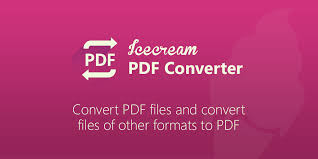Ensuring Quality: How to Preserve Formatting During PDF Conversion
Introduction to PDF Conversion
Have you ever wondered why your beautifully formatted document looks so different after converting it to PDF? PDF (Portable Document Format) conversion can sometimes be a tricky process. While it offers a universal format for sharing documents, maintaining the original formatting can be a challenge.
The Importance of Preserving Formatting Imagine spending hours perfecting the layout, fonts, and graphics of your document, only to have it appear jumbled and disorganized after conversion. Preserving formatting is crucial not just for aesthetics but also for ensuring that the content remains readable and professional.
Common Challenges in PDF Conversion One of the most common challenges in PDF conversion is the loss of fonts and styles. Your carefully chosen fonts may be replaced with default options, and custom styles may be discarded. Additionally, images and graphics can become distorted or lose their quality during the conversion process.
- Loss of Fonts and Styles
- This can lead to inconsistencies in the document and make it difficult for readers to follow along.
- Distorted Images and Graphics
- Images that looked crisp and clear in the original document may appear blurry or pixelated in the converted PDF.
Tools and Techniques for Quality Preservation To ensure quality preservation during PDF conversion, there are several tools and techniques you can utilize.
- Using Specialized Software
- There are various specialized software options available that are designed to preserve formatting during PDF conversion. These tools often offer advanced features and customization options to help you maintain the look and feel of your original document.
- Best Practices for Manual Adjustments
- In some cases, manual adjustments may be necessary to ensure that the formatting is preserved correctly. This may involve adjusting fonts, styles, and layouts within the PDF document itself.
Steps to Maintain Formatting To maintain formatting during PDF conversion, follow these steps:
- Choose the Right Conversion Tool: Select a reliable PDF conversion tool that is known for preserving formatting.
- Check Settings: Before converting, review the settings to ensure they are optimized for preserving formatting.
- Test the Conversion: After converting, carefully review the PDF to ensure that all formatting has been preserved correctly.
- Make Manual Adjustments: If necessary, make manual adjustments to the PDF to correct any formatting issues.
Conclusion Preserving formatting during PDF conversion is essential for maintaining the integrity and professionalism of your documents. By understanding the common challenges and utilizing the right tools and techniques, you can ensure that your documents retain their original formatting and appearance.
In today's digital age, the ability to convert various file formats to PDF (Portable Document Format) and vice versa is crucial Desbloquear pdf for professionals across industries. Whether it's for preserving document integrity, ensuring universal compatibility, or leveraging advanced features, mastering advanced PDF conversion techniques can streamline workflows and enhance productivity. This guide delves into expert insights and strategies to help you navigate the complexities of PDF conversions effectively.
1. Understanding the PDF Format
Before diving into advanced techniques, it's essential to understand the basics of the PDF format:
- Structure: PDFs encapsulate text, images, fonts, and vector graphics in a single file.
- Universality: PDFs can be viewed on virtually any device or operating system without compromising layout or formatting.
- Security: PDFs offer robust encryption and password protection options.
2. Advanced Conversion Tools
While basic conversion tools are suitable for simple tasks, advanced scenarios demand specialized tools:
- OCR (Optical Character Recognition) Software: For converting scanned PDFs into editable text, tools like Adobe Acrobat Pro, ABBYY FineReader, or online platforms like OCR.space can be invaluable.
- Batch Converters: When dealing with multiple files, batch conversion tools such as PDFelement or Adobe Acrobat Batch Processing can save time.
- API-Based Solutions: For integration into custom workflows or software applications, API-based PDF conversion services like PDF.co provide flexibility and scalability.
3. Best Practices for High-Quality Conversions
Achieving high-quality conversions requires attention to detail:
- Maintain Original Formatting: Always prioritize tools and settings that preserve the original layout, fonts, and graphics.
- Resolution and Compression: Adjust resolution and compression settings to balance file size with quality, especially for scanned documents.
- Metadata and Accessibility: Ensure that converted PDFs contain relevant metadata and are accessible to users with disabilities by utilizing tagging and accessibility features.
4. Advanced Strategies for Specific Scenarios
Depending on your requirements, specific strategies may be more effective:
- Interactive Forms: Use tools like Adobe Acrobat to convert static forms into interactive PDF forms with fillable fields, checkboxes, and digital signatures.
- Multimedia Integration: Incorporate multimedia https://www.facepdf.com/ elements such as videos, audio clips, or hyperlinks using advanced PDF editors like Foxit PhantomPDF or Nitro Pro.
- Redaction and Security: Implement advanced redaction tools to securely remove sensitive information and apply encryption or DRM (Digital Rights Management) for enhanced security.
5. Automation and Integration
To optimize workflows, consider automation and integration options:
- Scripting and Macros: Leverage scripting languages like JavaScript within PDF editors to automate repetitive tasks or customize conversion processes.
- Integration with Document Management Systems: Integrate PDF conversion capabilities into existing Document Management Systems (DMS) or Content Management Systems (CMS) for seamless operations.
FAQs
Why is preserving formatting important in PDF conversion?
- Preserving formatting ensures that the content remains readable and professional, maintaining the integrity of the original document.
What are the common challenges in PDF conversion?
- Common challenges include the loss of fonts and styles, as well as distorted images and graphics.
How can specialized software help in preserving formatting?
- Specialized software offers advanced features and customization options designed to maintain the look and feel of the original document during PDF conversion.
What should I do if the formatting is not preserved correctly?
- If the formatting is not preserved correctly, you may need to make manual adjustments to the PDF to correct any issues.
Are there any tips for ensuring quality preservation during PDF conversion?
- Choose a reliable conversion tool, review the settings before converting, test the conversion thoroughly, and be prepared to make manual adjustments if necessary.



Comments
Post a Comment